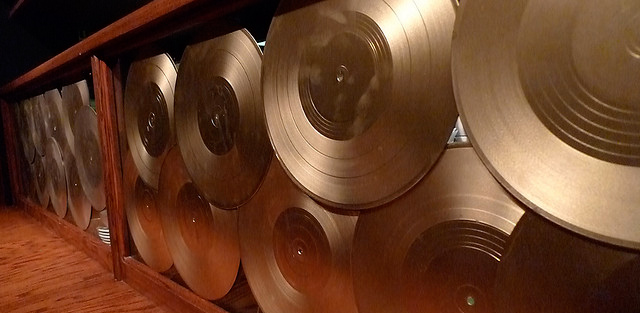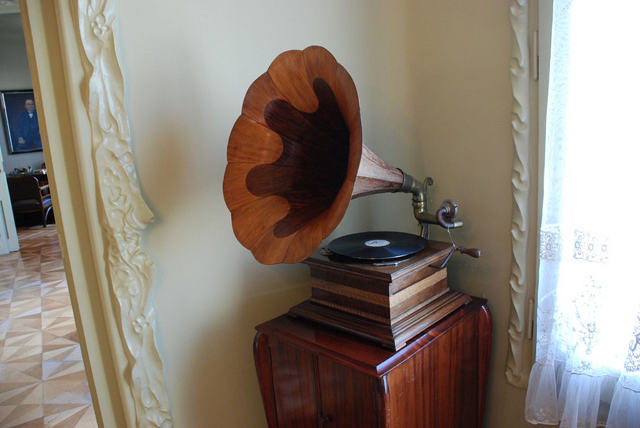
The Record Industry's Evolution: A Century of Music Business History (1890-2005)
The record industry emerged as a temporary solution between the invention of sound recording (1890s) and the internet (1990s), revolutionizing how musicians earned money. Here's a concise history:

Gold records displayed on wall
Electronics companies like Sony and Columbia initially created records to make their record players more useful. The recorded music became more profitable than the hardware, birthing the recording industry.

Antique gramophone with vinyl record stack
For about 100 years (until 2005), artists could generate wealth through physical copies - records, tapes, and CDs. This contrasted with earlier musicians like Mozart, who couldn't sell copies of their work, and other art forms like painting, where originals hold unique value.

Mona Lisa portrait
Today's music industry has evolved beyond physical sales. Artists now have multiple revenue streams:
- Digital distribution platforms
- Streaming services
- Direct-to-fan sales
- Live performances
- Social media monetization
- Merchandise
- Licensing deals
The modern era offers musicians more diverse opportunities to reach audiences and generate income, though the traditional record industry model of earning primarily through physical sales has largely ended. Success now often requires embracing multiple revenue channels and digital platforms rather than relying solely on recorded music sales.
